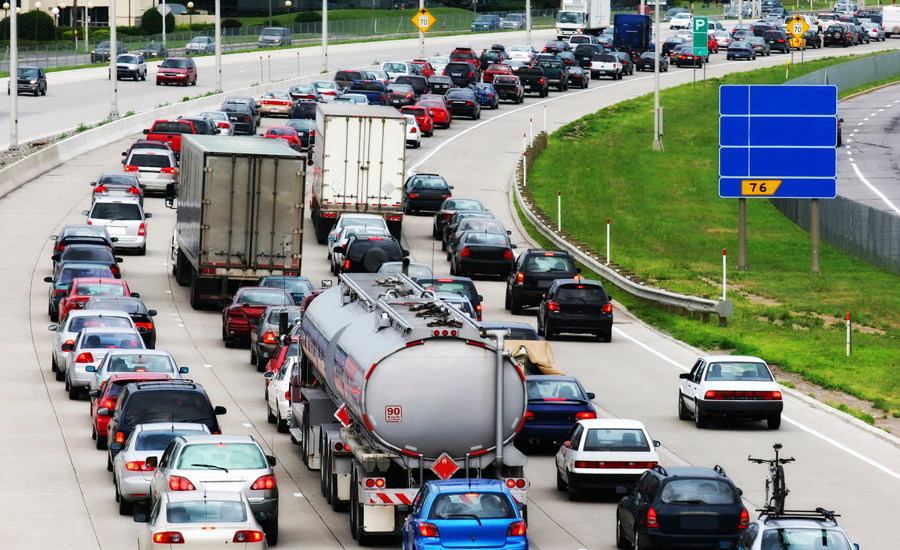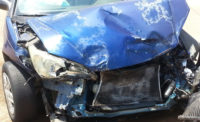Posted with permission from Fairwarning.org:
Garrett Wilhelm was chatting with the Facetime app on his Apple iPhone, police say, as he sped along an interstate highway northwest of Dallas on the day before Christmas in 2014. He crashed his SUV into a sedan carrying a young family, killing five-year-old Moriah Modisette and injuring her parents and sister.
Ashley Kubiak was reading a text on her iPhone when she drove her Dodge Ram pickup into a Chevy Tahoe in Rusk County, Texas, in April 30, 2013. Seven-year old Sammy Lane Meador was left paralyzed, and his grandmother and great aunt were killed.
Wilhelm and Kubiak would face criminal charges, but the legal fallout has touched Apple as well.
Apple had clearly grasped the danger of drivers compulsively fiddling with their iPhones. In 2008, the company submitted a patent for a lockout system that could disable smartphone functions “that may interfere with the safe operation of a vehicle by a driver.” The document summed up the need for the lockout in blunt terms. “Texting while driving has become so widespread that it is doubtful that law enforcement will have any significant effect on stopping the process,” it said.
Yet Apple didn’t implement the lockout technology. That led to a trickle of lawsuits stemming from distracted driving crashes, though Apple so far has made short work of these cases. All have been dismissed, prior to trial, including those filed by the Modisette and Meador families. And today, Apple notched another victory when the California Supreme Court declined to review the Modisette case, leaving only the Meador claim hanging by a thread. In rejecting at least five cases, courts have ruled that Apple had no legal duty to implement the lockout technology, nor was responsible for the reckless acts of distracted drivers.
That is likely to be the prevailing view “until the judge’s daughter gets run over by somebody who’s texting,” groused Jonathan Michaels, a Southern California plaintiff lawyer who filed one of the failed lawsuits. “This is a ridiculously dangerous issue,” he said.
Successful product litigation can have the force of regulation, causing manufacturers to add safety features as a shield against liability. However, device makers and wireless service providers so far have flicked away legal attacks. There has been an “unbroken line” of court decisions “rejecting attempts to expand tort liability for distracted driving,” Apple lawyers said in a recent court filing.
Still, the lawsuits might have had one modest effect In 2017, Apple introduced “Do Not Disturb While Driving,” an app that allows motorists to block incoming messages and calls. But like other anti-distraction apps, it must be activated by the driver, so its use is completely voluntary. Critics say drivers who know better than to use their smartphones behind the wheel don’t need “Do Not Disturb,” while the compulsive users will ignore it.
An Apple spokeswoman declined to comment on the litigation, and wouldn’t say if it prompted the rollout of the anti-distraction app.
Bethany and James Modisette, parents of Moriah, filed their wrongful death suit in Santa Clara County Superior Court in California, Apple’s home base. After the court threw out the case, a state appeals court in December rejected the Modisette’s appeal. “We are not persuaded that California law imposes a duty on the manufacturer of a cell phone to design it in such a manner that a user is incapable of using it while driving,” the panel ruled.
In January, the Modisettes filed the petition that the state’s highest court today denied without comment. Citing the compulsive behavior triggered by smartphones, the Modisette lawyers said they could not be compared with other sources of distraction. “A device which in numerous respects has altered the way mankind lives, behaves and thinks, cannot be equated to a cheeseburger, a tube of lipstick, or even an ordinary cell phone,” the petition said.
“Apple and the body of studies observing smartphone induced distracted driving recognize that law enforcement aimed at drivers will likely not be enough to effectively limit or prevent distracted driving” the petition said. “This case therefore presents important legal issues for not only this particular case, but for the safety of everyone using California’s highways and roads.”
For their part, the Apple lawyers argued that the appeals ruling did not warrant Supreme Court review. It merely “echoes what courts in California and nationwide have consistently recognized: that product manufacturers are not liable for distracted driving accidents.”
The Meador case was filed in 2015 in U.S. District Court for the Eastern District of Texas. It, too, was dismissed, and last month the 5th Circuit Court of Appeals shot down the appeal. “No Texas case has addressed whether a smartphone manufacturer should be liable” for the actions of a distracted driver,” the court declared. “To our knowledge,…no court in the country has yet held that, and numerous courts have declined to do so.”
Gregory Love, a lawyer in Henderson, Texas, for both the Meadors and Modisettes, said a petition for U.S. Supreme Court review of the Meador case will be filed this spring. In an email to FairWarning, Love said the only way to address what he described as an ”epidemic” of distracted driving tragedies was at “the smartphone design level…If you create the monster, you have a duty to control the monster,” he said.
What happens when a driver kills someone while fiddling with a cellphone? often, not much
Don’t drive distracted, wireless industry says, but safety advocates want more than talk
However, in absolving Apple the courts are finding that it is “not inducing this unsafe use of the product, they’re just not preventing it,” said Gregory Keating, a professor of law and philosophy at the University of Southern California Gould School of Law. The cases are “close to the line,” he said, and a court could decide one differently, but a string of similar rulings has a “persuasive impact.” Once several courts “go one way,” Keating said, “the less likely another jurisdiction is to go the other way.”
Moreover, in suing Apple, plaintiffs are “taking on maybe the most famous and admired company in America,” he observed. That “doesn’t make a close case any easier to win.”
In 2017, according to a federal figures, distracted driving crashes killed an estimated 3,166 people–some due to cellphone use. Officials concede that distraction deaths relating to cellphones may be substantially undercounted, since it’s usually hard to determine if a driver in a fatal crash was on a phone.
Safety advocates have urged the National Highway Traffic Safety Administration to adopt regulations to limit distraction from smartphones and other portable devices. The agency has spurned the idea of mandatory standards. But in December, 2016, it proposed nonbinding guidelines calling for device makers and wireless providers to collaborate on technology that could disable drivers’ phones without blocking the devices of passengers.
Despite their nonbinding nature, the proposed guidelines came under furious attack from the wireless industry, with the powerful Consumer Technology Association branding them ”the worst of government overreach.”
More than two years later, NHTSA has not adopted the guidelines nor said if it will. Many regulatory initiatives advanced during the Obama administration have been watered down or revoked since President Trump took office. This one seems simply to have fallen off the radar. NHTSA did not respond to a question about the status of the guidelines.
About FairWarning
This story was reported by FairWarning (www.fairwarning.org), a nonprofit news organization based in Pasadena, Calif., that focuses on public health, safety and environmental issues.

 Myron Levin founded FairWarning after more than 20 years as a staff writer for the Los Angeles Times, where he was a member of the California investigations desk. He has won numerous honors and awards for his detailed investigations of health and safety matters, including an Alicia Patterson Foundation fellowship and the National Press Club’s Consumer Journalism Award. He has reported on the tobacco industry, auto and tire safety, and a variety of product liability issues. He likes hiking and playing racquetball, and he owns a minuscule share of a professional minor league baseball team. Myron is a member of FairWarning’s board of directors.
Myron Levin founded FairWarning after more than 20 years as a staff writer for the Los Angeles Times, where he was a member of the California investigations desk. He has won numerous honors and awards for his detailed investigations of health and safety matters, including an Alicia Patterson Foundation fellowship and the National Press Club’s Consumer Journalism Award. He has reported on the tobacco industry, auto and tire safety, and a variety of product liability issues. He likes hiking and playing racquetball, and he owns a minuscule share of a professional minor league baseball team. Myron is a member of FairWarning’s board of directors.




.jpg?t=1721257160)

